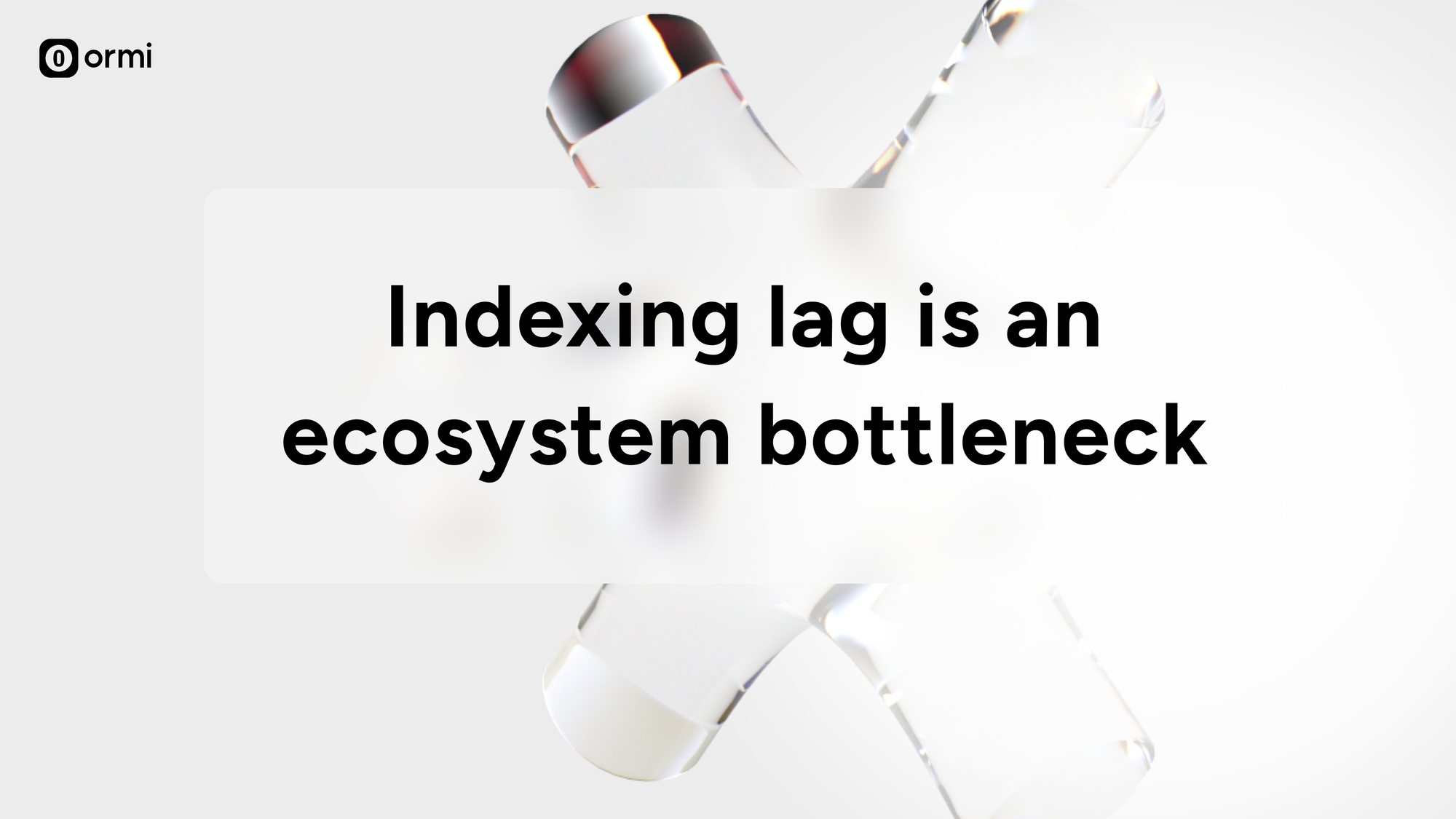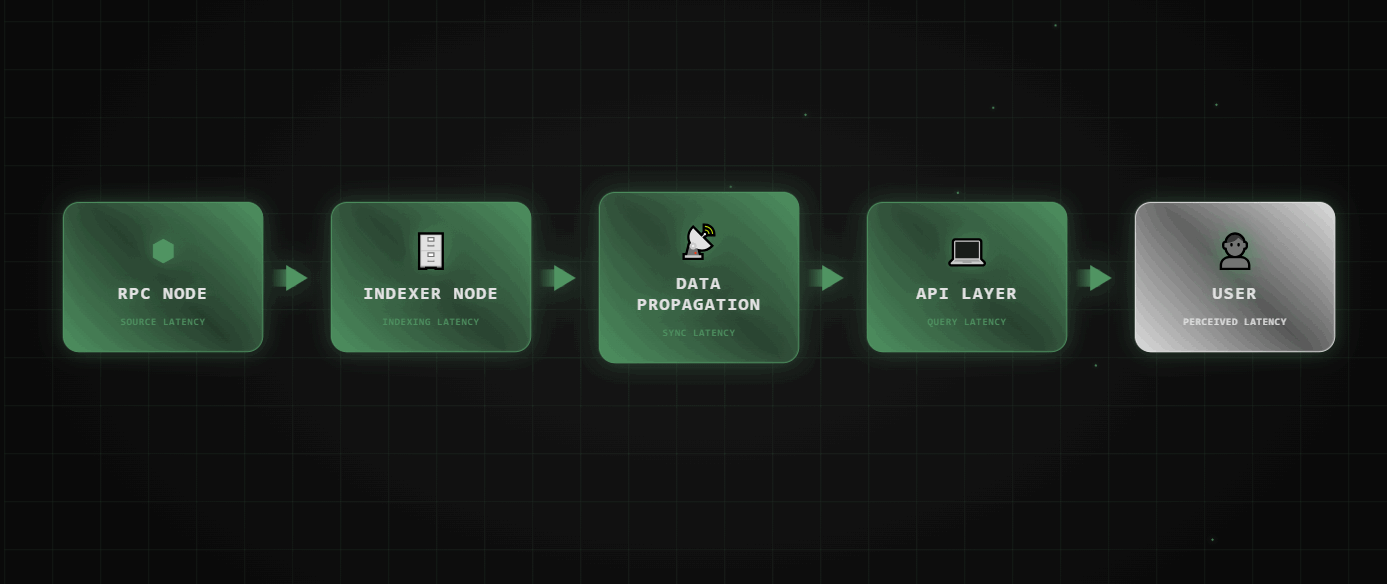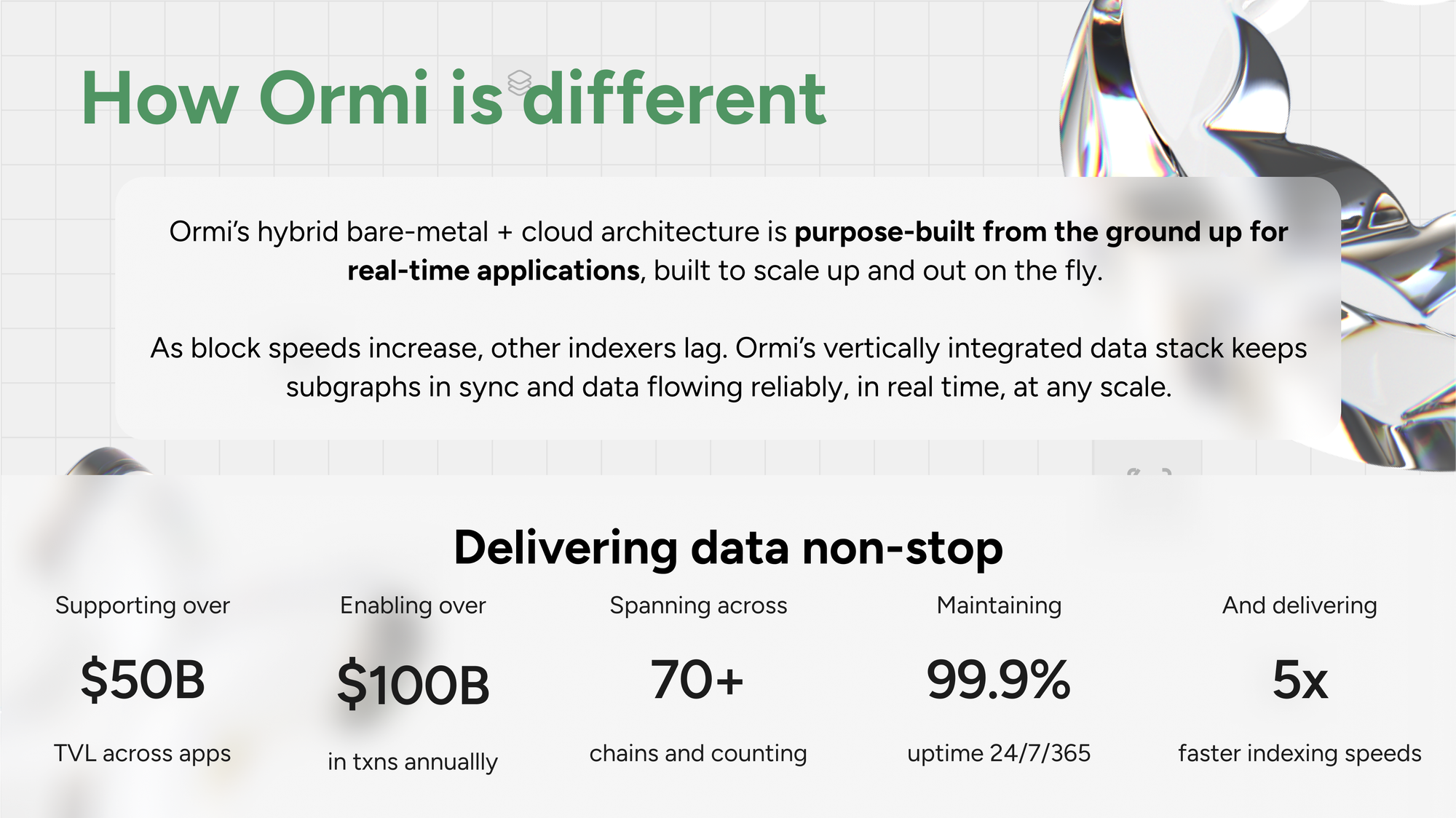Your chain isn’t fast if your data is slow
A fast blockchain isn’t truly fast if its data can't be indexed fast enough. This post explains why real-time indexing, low-latency queries, and robust infra like Ormi are essential for scaling modular, high-throughput chains and why devs will churn if your data layer breaks.

Most chains today are obsessed with throughput. Every week brings a new benchmark: faster finality, higher TPS, modular execution, multi-rollup support. These metrics matter, but only up to a point
The reason? Well, users and developers don’t interact with validator sets. They interact with the data layer.
When dApps lag, dashboards break, or bots miss trades,they blame the chain. But in most cases, the failure isn’t caused by block production, but data access.
A chain isn't fast if the state isn't interpretable in real-time
It’s also not reliable if the chain’s indexing lags behind under load. Nor is it scalable if devs are forced to build around broken infra.
And guess what? This problem will compound when AI agents take over the bulk of on-chain operations.
Performance isn't just block-time, it's indexing speed, query speed and more

Every transaction you process increases the burden on the data layer. The faster your chain runs, the more pressure it puts on indexing, storage, and state retrieval.
The problem is, most ecosystems treat this layer as an afterthought - relying on community-hosted indexers, open-source Graph nodes, or legacy subgraph tooling originally built for analytics, and not for real-time performance on high-throughput or modular chains.
This results in: stale data, degraded user experience, and engineering teams wasting time debugging tools that should just work.
So what does this mean for dApps in your ecosystem?
- DeFi protocols miss real-time risk signals.
- Stablecoin dashboards show outdated balances.
- Bots lose edge because query latency isn’t predictable.
- Every millisecond of lag contributes to perceived failure. At scale, the failure can be real, in some cases, existential.
Garbage in, garbage out - developers can smell it
Many teams still rely on legacy indexing setups built for dashboards, analytics, or slow-moving protocols. Developers notice when query speeds degrade. They notice when the subgraph is out of sync. And they especially notice when your ecosystem forces them to use workarounds just to make their product usable.
They’ll try to fix it. If it’s too much work, they’ll move on.
No ecosystems should expect app teams to build and maintain their own indexers. No serious chain should expect growth if data access isn’t built in.
Data - current and historical - is core infrastructure. If your developer experience sucks in real-world conditions, the growth curve flattens,s and your ecosystem falters.
Scaling the chain means scaling the data layer
Chains are evolving: faster blocks, parallel execution, async rollups, modular layers. But each of these improvements comes at a cost.
- increased state complexity,
- more data to index, and
- higher demand for real-time accessibility
It doesn't matter how fast your chain produces blocks if developers can't access the latest state.
It also doesn’t matter how many rollups you support if bridge activity can’t be monitored in real time.
And it most definitely doesn’t matter how secure your sequencer is if your frontends and bots are using stale data.
The entire chain experience, from oracles to wallets to AI agents, depends on how quickly and reliably you can serve useful data.
Why Ormi is solving this problem

Ormi is purpose-built for the next generation of chains.
We provide a vertically integrated indexing stack, from bare metal infrastructure to cloud orchestration - designed to deliver real-time performance at any scale. Our systems handle block ingestion, decoding, transformation, and querying with sub-30ms latency at 1,000 RPS, even under high load.
0xgraph, our Graph-compatible indexing engine, supports 5x faster syncing and 71% faster queries across multiple chains, schemas, and use cases. It's designed for heavy-duty production apps, not just dashboards.
Today, Ormi supports some of the largest ecosystems in Web3, chains and protocols processing tens of billions in value and hundreds of billions in transactions. We've replaced legacy solutions that couldn’t keep up. And we've helped teams go from weeks of indexer debugging to zero-maintenance querying.
The data layer is your chain interface
You can’t promise real-time execution while delivering delayed state. You also can’t scale adoption without giving developers reliable tools to build with confidence.
Your indexer is the front line of developer experience, and if it breaks, the whole ecosystem feels it.
About Ormi
Ormi is the next-generation data layer for Web3, purpose-built for real-time, high-throughput applications like DeFi, gaming, wallets, and on-chain infrastructure. Its hybrid architecture ensures sub-30ms latency and up to 4,000 RPS for live subgraph indexing, sub-10ms responses across 100+ API schemas, and a powerful SQL engine for historical and AI-ready data.
With 99.9% uptime and deployments across ecosystems representing $50B+ in TVL and $100B+ in annual transaction volume, Ormi is trusted to power the most demanding production environments without throttling or delay.






